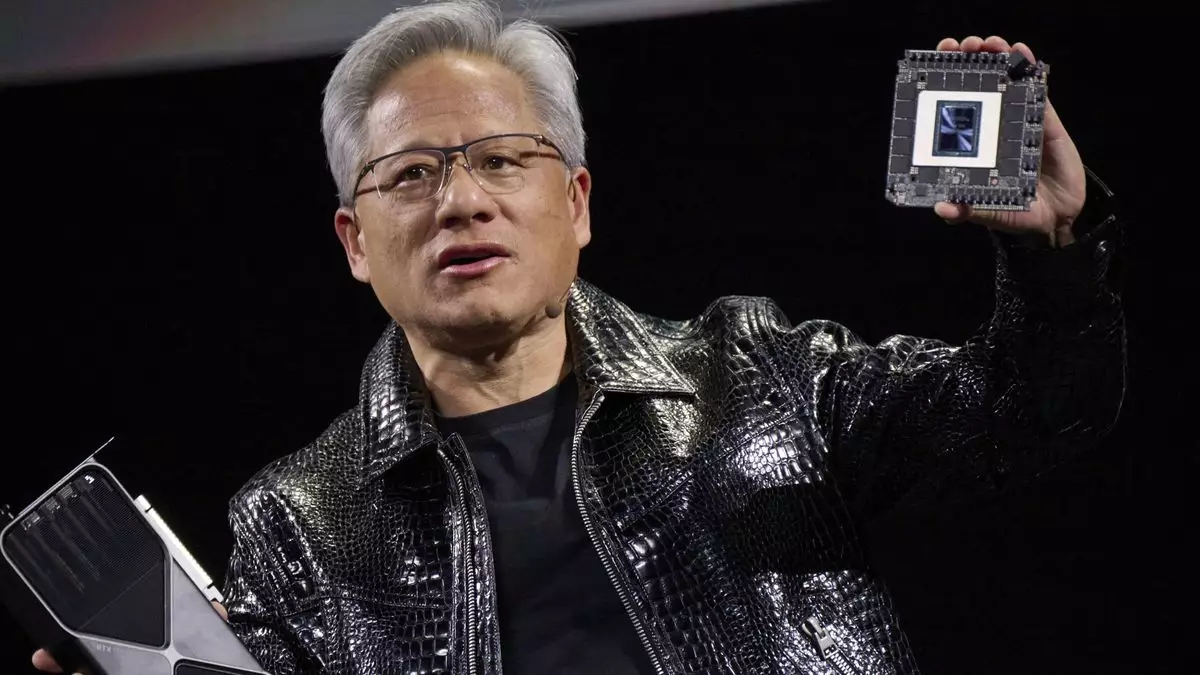In recent years, Nvidia has positioned itself at the helm of technological advancement in the gaming graphics industry. At the heart of this disruption lies its innovative graphics technology, particularly the Deep Learning Super Sampling (DLSS) and frame generation features. While these technologies have garnered much acclaim for their rendering capabilities, an in-depth look reveals a more nuanced narrative about the time, effort, and strategic planning that underpin these advancements.
A new book, *The Nvidia Way: Jensen Huang and the Making of a Tech Giant* by Tae Kim, sheds light on the extensive journey behind Nvidia’s frame generation technology. Contrary to the assumption that breakthroughs can arise quickly, the development of this AI model took a staggering six years. Led by researcher Bryan Catanzaro, this commitment underscores the level of dedication and perseverance required to refine an AI system that would ultimately revolutionize graphics rendering.
Catanzaro candidly states, “While we were working on it, we saw continuous improvement in the quality of results, so we kept working.” This perseverance is not common in academia, where projects often have strict deadlines. In contrast, Nvidia allowed a research-focused environment where innovation could flourish without the pressure of immediate results. Such an approach is integral to fostering creative problem-solving and high-quality outcomes—a hallmark of successful tech enterprises.
DLSS and Frame Generation: A Shift in Gaming Graphics
Frame generation—a technology that enhances the gaming experience by interpolating additional frames between those rendered through traditional methods—demonstrates Nvidia’s forward-thinking strategy. The significance of this innovation goes beyond mere graphical improvements; it embodies a paradigm shift in how gaming technology can utilize artificial intelligence to deliver better results with fewer hardware investments.
With the increasing complexities of game design and the crescendoing demands from gamers, the cooperative synergy between AI algorithms and GPU architecture is a cornerstone of Nvidia’s operational model. By focusing on developing smarter software solutions, Nvidia maximizes performance without necessitating a corresponding increase in manufacturing costs, thereby appealing to both developers and end-users.
Technologically savvy gamers are undoubtedly aware of these strengths. However, the reality is that each iteration of Nvidia’s graphics cards, particularly the RTX 50 series, has often relied more on these advanced, AI-enhanced techniques rather than showcasing a significant uptick in traditional hardware capabilities. While the DLSS technology represents an ingenious method for enhancing graphics, it simultaneously raises concerns for consumers longing for substantial advancements in raw rasterization performance.
A critical examination of Nvidia’s business strategy reveals a clever balancing act; through the deployment of technologies like DLSS, Nvidia can enhance its profit margins without the accompanying overhead of substantial new hardware developments. Unlike traditional approaches, where creating more powerful GPUs entails higher fabrication costs and research expenditures, Nvidia’s software solutions reduce the financial burden while still delivering remarkable performance improvements.
However, this raises a larger question regarding Nvidia’s commitment to maintaining a balance between software innovation and hardware development. For many consumers, satisfactory experiences hinge not just on AI-enhanced visuals but also on traditional rendering capabilities that define their gaming experiences. Regular users may find it less exhilarating to see AI optimizations while the foundational rendering architecture evolves at a snail’s pace, leading to a disconnect between consumer expectations and corporate strategies.
The trajectory of Nvidia’s innovations portends exciting possibilities, but it also necessitates a vigilant eye from gamers. As the industry advances and AI tools become commonplace, the focus must remain on ensuring that foundational hardware capabilities do not falter. As gamers continue to invest in cutting-edge technology, they deserve not only incremental software advancements but also substantive developments in the powerful hardware that brings their virtual worlds to life.
In summation, while Nvidia’s achievements with DLSS and frame generation are impressive, they represent just one aspect of an ongoing challenge—the balance between innovative software solutions and traditional hardware prowess. As the tech landscape evolves, Nvidia and the gaming community alike must remain engaged in the dialogue about what constitutes true progress in graphics technology.

